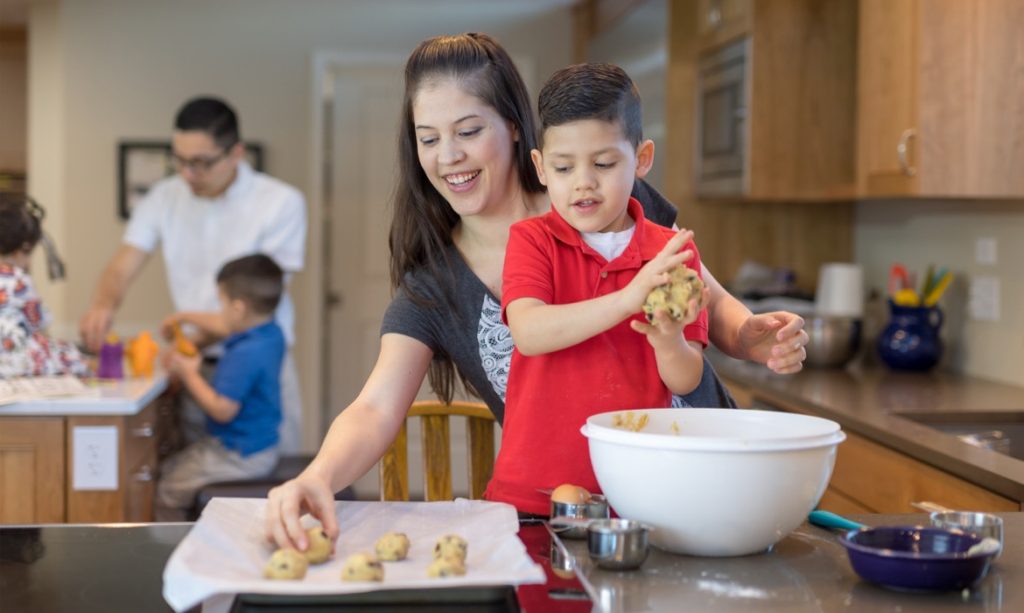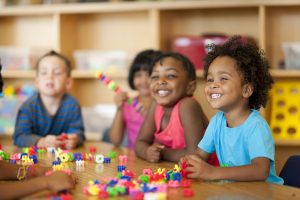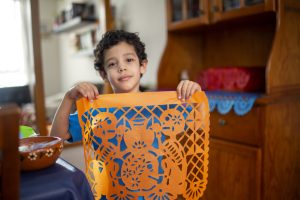This post is adapted from the article, Leveraging the Math We Do, which originally appeared on the NYU Institute of Human Development and Social Change website.
- Everyone can support young children’s math learning at home, no matter one’s level of comfort with math.
- Talking about math as part of everyday family routines is an easy way to build children’s early math skills.
- Math Snacks offer quick ideas for finding and talking about math in everyday family routines, like putting away groceries or folding laundry.
As part of my work with DREME, I have visited about 75 Spanish-English bilingual families with young children, mostly immigrants who are living in New York City. I have observed parents interact with their preschool-aged children in everyday routines around the home and chatted with parents about their attitudes toward math. A few of those visits stand out for me.
There was Angélica, originally from Mexico and the mother of a 4-year-old boy, who told me that: “Las matemáticas son para personas inteligentes. Yo no hago matématicas. Mi niño sí hace matemáticas. Le gustan.” (Math is for intelligent people; I don’t do math. My son, he does do math; he likes it.)
In contrast, Celerina, who is also from Mexico, and the mother of a 4-year-old girl, said: “Las matemáticas están en todo. Yo las uso en mi trabajo como cajera, cuando cocino y voy a hacer el mandado, y cuando tengo que pensar en el tiempo y en todo lo que tenemos que hacer en el día.” (Math is everywhere. I use it in my work as a cashier, when cooking and shopping, and when figuring out my family’s schedule.)
While Angélica’s and Celerina’s attitudes toward math differ, I observed them both having conversations around math with their children. Both parents used words that highlight numbers, patterns, shapes, and other key early math concepts. These observations show that everyone can play a role in supporting young children’s early math learning at home, no matter one’s experience with and attitude toward math.
Talking and Learning About Early Math at Home
Whether you share Angélica’s or Celerina’s level of comfort with math—or if you feel something in between—you can find, use, and talk about everyday math in family routines. These types of conversations, also called math talk, help children to develop a special “math lens” that sees math in the world around them. Talking about how many ingredients are needed while following a recipe, or identifying shapes of street signs, are examples of math talk. In addition, research shows that children are more likely to succeed in school when they explore everyday math with their families.
DREME’s Math Snacks resource offers quick and easy suggestions for discussing math in family routines, from cooking and cleaning to errands and bedtime. Also available in Spanish, Math Snacks are fun, practical, and eye-opening, as they inspire families to notice math that’s all around them. The best part is that families can use Math Snacks at home, right now, for free, and without adding work to busy days. Scroll down to the bottom of this page to download the Math Snacks in PDF format.
Search for Math in Everyday Life
Math Snacks can be a starting point for coming up with some of your own math talk ideas. Once you grow comfortable finding math in everyday life, you will see that there are many opportunities to talk and learn about math together.
The first step is to understand that you are already doing math at home, which will help you to uncover early math learning opportunities. For example, we sort laundry based on colors and type (e.g., clothes and kitchen towels). In doing so, we are grouping and creating sets. When doubling a recipe or figuring out how much medicine to give to a child, we are adding and subtracting. When tidying up toys, we make decisions about where things go by relying on measurement and spatial thinking. When knitting and weaving, we create patterns (e.g., two lines of red, one blue, two red, one blue), a skill that forms the basis of algebra.
In other words, to support young children’s early math learning, you do not need to buy or own anything special materials. You already have the tools—they are the everyday objects and routines of family life.
Engage in Household Routines Together
The second step is to include your child in household tasks that, frankly, are unavoidable. Plus, young children love to help out! They can sort books by size or figure out how many cups are needed when setting the table. Inviting children to participate in these activities not only develops their early math skills, but also their independence and self-esteem.
Use Math Language in Conversation
The third step is to talk about the math. As you do these everyday household tasks, describe what you’re seeing and doing. Try asking questions that prompt children to think about and solve everyday math problems. For example, when setting the table, you could say, “Fernanda, we need three plates.” You could also say, “Fernanda, count how many people are going to eat and then tell me how many plates I need to get from the cupboard.”
Ask Follow-up Questions, and Listen
The fourth and final step is to ask the magic question: Why? Remember that math is about solving problems and that there are many ways to solve one problem. When children respond with a solution, ask them how they figured out the answer. Whether their answer is right or wrong, asking lets you understand their thinking and help them.
Practice Everyday Math Conversations
In short, children’s early math skills develop when they talk and think about math with their families. Here are some fun and easy ideas for finding math in everyday family routines.



